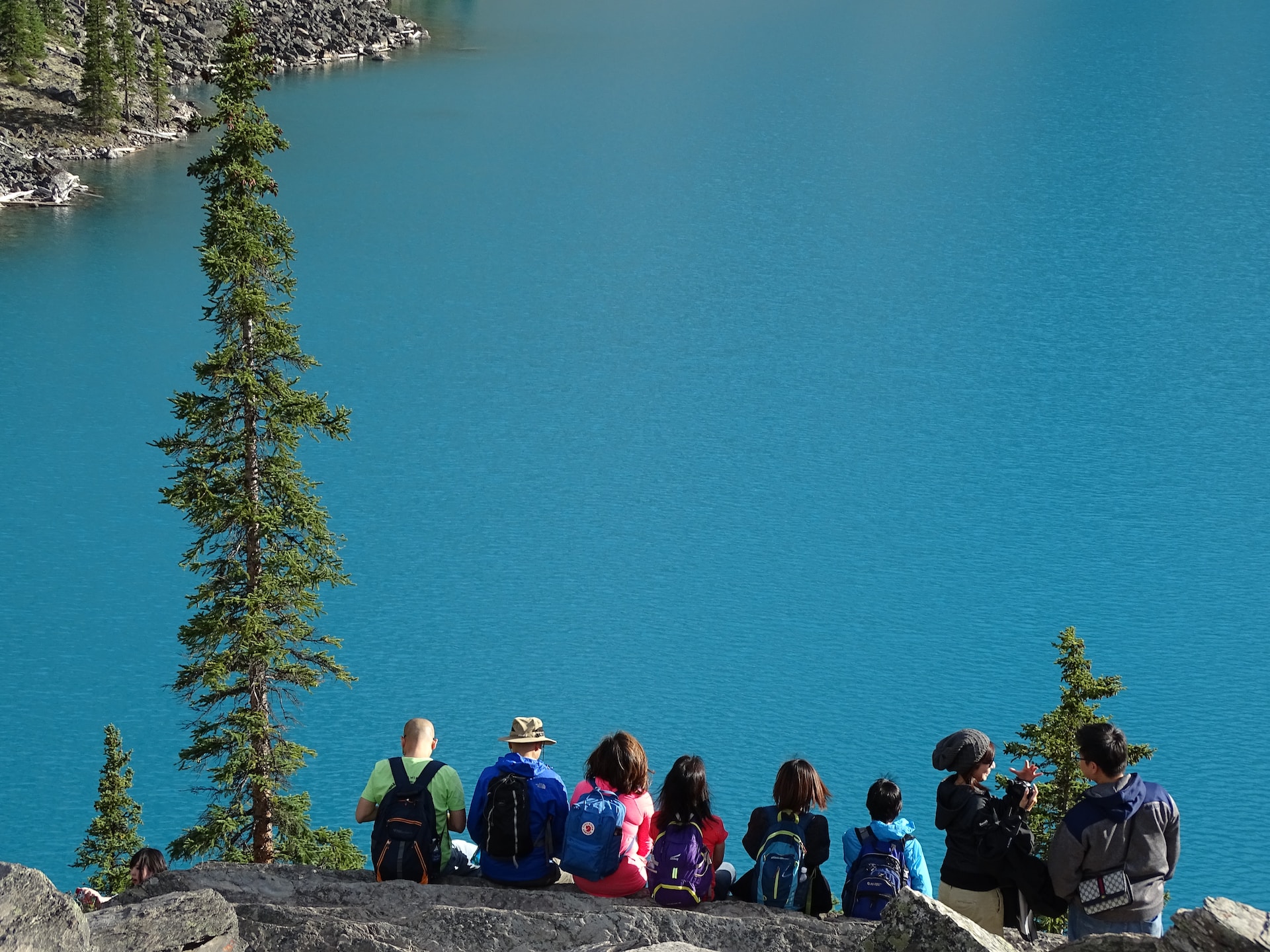TRAVEL
Can You Travel to a Level 4 Country? Everything You Need to Know

Title: Can You Travel to a Level 4 Country? Everything You Need to Know
Meta-Description: If you’re planning to travel abroad, it’s important to know the restrictions and regulations in place, especially for level 4 countries. Can you travel to a level 4 country? Read on to find out.
Introduction
The COVID-19 pandemic has impacted the world in unprecedented ways, including travel restrictions and guidelines. The Centers for Disease Control and Prevention (CDC) has categorized countries into four levels based on COVID-19 risks. Level 4 countries have the highest risk of COVID-19 transmission and are considered very high-risk destinations. If you’re planning to travel to a level 4 country, you must know the regulations and guidelines in place to ensure your safety and the safety of others.
Can you travel to a level 4 country? The short answer is yes, but there are some important things you need to know before making any travel plans. In this article, we’ll cover everything you need to know about traveling to a level 4 country.
What are Level 4 Countries?
Level 4 countries are those with the highest risk of COVID-19 transmission. These countries have more than 500 cases per 100,000 residents in the past 28 days. The CDC recommends avoiding all travel to these countries, and if you must travel, you should be fully vaccinated and take additional precautions to protect yourself and others.
Some examples of level 4 countries as of April 2023 include:
- Brazil
- India
- Russia
- South Africa
- Turkey
It’s important to note that the list of level 4 countries can change at any time, so be sure to check the CDC’s website for the most up-to-date information before making any travel plans.
Can You Travel to a Level 4 Country?
Yes, you can travel to a level 4 country, but it’s not recommended. If you do choose to travel, you must be fully vaccinated and take additional precautions to protect yourself and others from COVID-19. Here are some important things you need to know if you’re planning to travel to a level 4 country:
- Check travel restrictions: Many level 4 countries have travel restrictions in place, including quarantine requirements,
 testing requirements, and entry restrictions. Be sure to check the latest information on the country’s embassy website or the CDC’s website.
testing requirements, and entry restrictions. Be sure to check the latest information on the country’s embassy website or the CDC’s website. - Get vaccinated: The CDC recommends that all travelers be fully vaccinated against COVID-19 before traveling to a level 4 country. This means waiting at least two weeks after your final dose of the vaccine before traveling.
- Take additional precautions: Even if you’re fully vaccinated, it’s important to take additional precautions to protect yourself and others from COVID-19. This includes wearing a mask in public, practicing social distancing, and washing your hands regularly.
- Be prepared: Traveling to a level 4 country can be unpredictable, so it’s important to be prepared for any situation. This includes having a plan in case you get sick or need medical attention while abroad.
What Are the Risks of Traveling to a Level 4 Country?
Traveling to a level 4 country comes with significant risks, including:
- Increased risk of COVID-19 transmission: Level 4 countries have the highest risk of COVID-19 transmission, which means that you’re more likely to get infected if you travel to these countries.
- Limited access to medical care: Many level 4 countries have limited access to medical care, which means that if you get sick or injured while abroad, you may not be able to receive the medical attention you need.
- Leave or return difficulties: In some cases, traveling to a level 4 country may lead to difficulties returning to your home country, or leaving the country after arrival, due to changing travel restrictions and other factors.
These risks should be carefully considered before deciding to travel to a level 4 country.
How to Prepare for Traveling to a Level 4 Country
If you have decided to travel to a level 4 country, it’s important to be prepared. Here are some steps you can take to prepare for your trip:
- Research the destination: Before making any travel plans, research the destination thoroughly. This includes learning about the local COVID-19 situation, the culture, and any travel restrictions in place.
- Get vaccinated: As mentioned earlier, the CDC recommends that all travelers be fully vaccinated against COVID-19 before traveling to a level 4 country. Make sure you have received all necessary doses of the vaccine at least two weeks before your trip.
- Check for entry requirements: Many level 4 countries have entry requirements in place, such as COVID-19 testing or quarantine requirements. Be sure to check the latest information on the country’s embassy website or the CDC’s website.
- Pack wisely: When traveling to a level 4 country, it’s important to pack wisely. This includes bringing necessary medical supplies, such as masks and hand sanitizer, as well as any medication you may need.
- Have a plan: In case you get sick or injured while abroad, it’s important to have a plan in place. This includes knowing how to access medical care and having a plan for getting home if necessary.
FAQs
Q: Is it safe to travel to a level 4 country?
A: Traveling to a level 4 country comes with significant risks, including an increased risk of COVID-19 transmission and limited access to medical care. It’s important to carefully consider these risks before deciding to travel.
Q: Do I need to be fully vaccinated to travel to a level 4 country?
A: The CDC recommends that all travelers be fully vaccinated against COVID-19 before traveling to a level 4 country.
Q: Are there travel restrictions in place for level 4 countries?
A: Many level 4 countries have travel restrictions in place, including quarantine requirements, COVID-19 testing requirements, and entry restrictions. Be sure to check the latest information on the country’s embassy website or the CDC’s website.
Conclusion
Traveling to a level 4 country is not recommended, but if you do choose to travel, it’s important to be fully vaccinated and take additional precautions to protect yourself and others from COVID-19. Make sure to research the destination thoroughly, check for entry requirements, and have a plan in case you get sick or injured while abroad. By taking these steps, you can help ensure a safe and successful trip.
TRAVEL
myfavouriteplaces.org:// Blog | Travel’s Best-Kept Secrets

Myfavouriteplaces.org://Blog, Traveling is an adventure that allows us to explore new cultures, indulge in exotic cuisines, and marvel at breathtaking landscapes. While popular tourist destinations often steal the spotlight, there’s something truly magical about uncovering travel’s best-kept secrets. In this article, we’ll delve into myfavouriteplaces.org, a blog dedicated to revealing the hidden gems of the world.
Introduction to myfavouriteplaces.org:// Blog
myfavouriteplaces.org is a treasure trove of travel inspiration, focusing on undiscovered destinations and unique experiences. Unlike conventional travel guides that highlight well-trodden paths, this blog is dedicated to showcasing the hidden gems that often go unnoticed by mainstream travelers.
Creation of myfavouriteplaces.org:// Blog
Immerse yourself in the origins of the blog myfavouriteplaces.org://, where the spirit of discovery and the love of the unexplored meet. This digital odyssey has its roots in the adventures of Simon and Susan, brave souls who dared to break free from the shackles of routine.
Imagine this: A couple, driven by an insatiable wanderlust, says goodbye to everyday business life and embarks on a transformative journey through 50 countries. The experiences gained during this trip became the basis for something extraordinary: a blog that goes beyond the ordinary.
Upon their return, Simon and Susan founded myfavouriteplaces.org://Blog, a virtual paradise where travel enthusiasts, philosophers and curious minds come together. It’s not just a platform; It is a testament to the belief that the world is full of wonders waiting to be discovered.
So as you browse these virtual pages, remember that every word and image is imbued with genuine exploration. This isn’t just a blog; It is an echo of steps into uncharted territory, an invitation to travel and a celebration of the creation of the blog myfavouriteplaces.org://. Prepare for an encounter with the extraordinary.
myfavouriteplaces.org:// Blog Uncover hidden treasures
Embark on a journey beyond the ordinary as the myfavouriteplaces.org:// blog reveals the world’s best-kept secrets – the hidden treasures that elude the average traveler’s view. These are not just travel destinations; They are a touch of authenticity, hidden from the hustle and bustle of the crowds, waiting to be discovered by intrepid souls looking for something more than the usual tourist fare.
You may be wondering why hidden treasures are important. They are important because they provide access to real cultural experiences, a chance to forge a deeper connection to the pulse of a place far from the beaten path. In a world often overshadowed by resorts, these gems are a testament to the beauty of the unexplored.
Our journey through these hidden gems is not just a list of places to visit; It is an ode to the unique, the intact and the culturally rich. These places exude authenticity and tell stories that go beyond the boundaries of conventional tourism.
myfavouriteplaces.org:// Blog Exploring Travel’s Best-Kept Secrets
Destination 1: Hidden Gems in Europe
Europe is known for its iconic landmarks and bustling cities, but beyond the tourist hotspots lie hidden treasures waiting to be discovered. From quaint villages tucked away in the countryside to secluded beaches with crystal-clear waters, myfavouriteplaces.org:// blog unveils the lesser-known wonders of Europe, offering travelers a chance to immerse themselves in authentic cultural experiences.
Destination 2: Unexplored Treasures in Asia
Asia is a continent of diversity, with each country offering its own unique blend of traditions, landscapes, and flavors. myfavouriteplaces.org:// blog shines a spotlight on the hidden gems of Asia, from remote mountain villages to hidden temples nestled in lush forests. Travelers can escape the crowds and embark on a journey of discovery, encountering the rich tapestry of cultures that make Asia so captivating.
Destination 3: Secret Spots in the Americas
The Americas boast a wealth of natural beauty, from the rugged landscapes of Patagonia to the pristine beaches of the Caribbean. However, beyond the well-known attractions lie secret spots waiting to be explored. myfavouriteplaces.org:// blog reveals hidden natural wonders and off-the-beaten-path destinations, allowing travelers to connect with the land and its people in a meaningful way.
myfavouriteplaces.org:// Blog expert advice
Real travel perspectives:
Discover valuable tips and insights from real travelers who have experienced the destinations first-hand.
Gain knowledge beyond the typical information found in standard manuals.
Unusual Jewels:
Discover hidden gems, charming cafes and local retreats off the beaten tourist path.
Discover unique and less explored places for a more authentic travel experience.
Cultural navigation:
Get guidance on how to navigate and understand foreign cultures with ease.
Learn about local customs, traditions and unspoken rules to promote cultural immersion.
Personal experiences:
Immerse yourself in the journeys of fellow travelers as they share their personal experiences.
Experience the emotions, challenges and joys of exploring new destinations through first-hand accounts.
Beyond standard routes:
Forget generic travel plans with personalized suggestions for a unique and unforgettable trip.
Discover unconventional itineraries that showcase the richness and diversity of each destination.
These points highlight the authenticity and depth of the advice on the myfavouriteplaces.org:// blog and ensure that readers receive valuable, real-world information for their travel adventures.
Why Choose Offbeat Travel?
While popular tourist destinations offer their own allure, there’s something special about venturing off the beaten path. By choosing offbeat travel experiences, travelers can avoid the crowds and discover hidden gems that are often overlooked by guidebooks. Whether it’s stumbling upon a charming café in a quiet alleyway or stumbling upon a hidden waterfall in the jungle, offbeat travel allows for unforgettable moments of discovery.
Tips for Discovering Hidden Gems
Discovering hidden gems requires a combination of research and spontaneity. By doing some homework beforehand and seeking recommendations from locals, travelers can uncover hidden treasures that aren’t listed in guidebooks. Embracing spontaneity and being open to unexpected adventures can also lead to serendipitous discoveries that enrich the travel experience.
Making the Most of Your Travel Experience
To truly make the most of your travel experience, it’s essential to immerse yourself in the local culture. Whether it’s striking up a conversation with a street vendor or participating in a traditional dance performance, engaging with locals can provide valuable insights and create meaningful connections. Additionally, don’t be afraid to step out of your comfort zone and try new things, whether it’s sampling exotic street food or embarking on a thrilling outdoor adventure.
Conclusion
In a world where travel has become increasingly commercialized, myfavouriteplaces.org reminds us of the beauty of exploring off the beaten path. By venturing beyond the tourist hotspots and uncovering hidden gems, travelers can create unforgettable memories and forge deeper connections with the places they visit. So, next time you’re planning a trip, consider straying from the beaten path and embarking on an adventure of discovery with myfavouriteplaces.org.
Unique FAQs
- Why should I choose offbeat travel destinations?
- Offbeat travel destinations offer unique experiences away from the crowds, allowing for a deeper connection with the local culture and environment.
- How can I find hidden gems when planning my trip?
- Researching lesser-known destinations and seeking recommendations from locals are great ways to uncover hidden gems.
- Are offbeat travel destinations safe to visit?
- While offbeat travel destinations may lack the infrastructure of popular tourist spots, they are often safe to visit, offering authentic experiences away from the crowds.
- What are some benefits of exploring hidden gems?
- Exploring hidden gems allows travelers to avoid tourist traps, experience authentic culture, and create unforgettable memories.
- How can I support local communities when visiting offbeat destinations?
- Supporting local businesses, engaging with locals, and respecting the environment are all ways to contribute positively to the communities you visit.
TRAVEL
DEVAN CHRISTOPHER ANDERSON’S VACATION/ LEISURE/ PARTY TOUR LIST

One of the privileges that come with being Devan Christopher Anderson is getting to vacation in some of the most exclusive destinations on the planet. Having a healthy bank account and a well-known name means you can escape to exotic locations that most people haven’t even heard of and be pampered in some of the best resorts in the world. Scattered all over the globe, the top vacation spots of the elite boast some of the prettiest scenery. They are also home to exclusive dining and entertainment venues, isolated and private beaches, and the filming locations of blockbuster hits.
United States Travel •
All Historical Black College Universities HOME COMING EVENTS/ SOCIALS/ SHOWS/ CLUBS/ Concerts •
Jacksonville, FL
• Orlando, FL
• Ft. Lauderdale,
FL • Miami South Beach,
FL • Washington,
DC • New York,
NY • Atlanta, GA
• Charlotte, NC
• Baltimore,
MD • New Orleans,
Louisiana
• Alabama , Montgomery
• Dallas, TX
• Houston, TX
• Chicago, IL
• Virginia Beach, VA
• Hollywood, Beverly Hills, Santa Monica, Burbank, Malibu, California
• Los Vegas, Nevada International Travel
• Bahamas, Caribbean
• Jamaica, Caribbean
• Nigeria, Africa
• Dubai, United Arab Emirates
• Egypt, Africa
• Cancun, Mexico
• Dominican Republic, Caribbean
• Puerto Rico, San Juan
• Columbia, South America
• Brazil , South America
• Peru, South America
• Toronto, Canada
TRAVEL
Philippines Tourism: Unlocking the Beauty of the Pearl of the Orient Seas

Explore the enchanting wonders of Philippines tourism, where sun-kissed beaches, vibrant culture, and warm hospitality await. Discover the top destinations, travel tips, and must-try experiences in the Pearl of the Orient Seas.
Introduction
Welcome to the Philippines, a tropical paradise brimming with natural beauty and rich cultural heritage. In this guide, we’ll take you on a journey through the heart of Philippines tourism, uncovering hidden gems and providing insider tips for an unforgettable experience.
The Allure of Philippines Tourism
Philippines Tourism: An Overview Dive into the diverse tapestry of Philippines tourism, from pristine beaches to lush mountains. Explore the vibrant cities, each with its unique charm, and discover why this archipelago is a traveler’s dream.
Island-Hopping Extravaganza Embark on an island-hopping adventure, where turquoise waters and powdery white sands beckon. From Boracay to Palawan, each island offers a unique blend of tranquility and excitement, making it a haven for beach lovers.
Cultural Mosaic: Local Festivals Immerse yourself in the Philippines’ rich cultural tapestry by joining local festivals. From the lively Sinulog Festival to the colorful Ati-Atihan, experience the warmth of Filipino hospitality and the vibrancy of age-old traditions.
Gastronomic Delights: A Culinary Odyssey Savor the flavors of Filipino cuisine, a delightful fusion of Malay, Spanish, and Chinese influences. Indulge in mouth-watering dishes like adobo, sinigang, and lechon, reflecting the diverse culinary heritage of the country.
Unlocking Hidden Paradises
Off-the-Beaten-Path: Unexplored Treasures Escape the crowds and venture into hidden paradises. Discover the untouched beauty of Banaue Rice Terraces, the mesmerizing Chocolate Hills in Bohol, and the enchanting Enchanted River in Surigao. These lesser-known gems promise a unique and tranquil escape.
Diving Paradise: Tubbataha Reefs Natural Park For underwater enthusiasts, Tubbataha Reefs Natural Park is a marine sanctuary boasting vibrant coral reefs and diverse marine life. Dive into the crystal-clear waters and witness the breathtaking beauty that lies beneath the surface.
Travel Tips for a Seamless Experience
Essential Travel Tips: Navigating the Philippines Ensure a smooth journey with these essential travel tips. From understanding local customs to packing light for island-hopping, these insights will help you make the most of your Philippines tourism adventure.
Best Time to Visit: Chasing Perfect Weather Plan your visit to coincide with the best weather conditions. Whether you seek vibrant festivals or quiet beach retreats, understanding the seasonal variations will enhance your travel experience.
Safety First: Navigating Local Customs Embrace the warm Filipino hospitality by familiarizing yourself with local customs and etiquette. Respectful gestures go a long way in ensuring a positive and memorable trip.
FAQs: Your Philippines Tourism Queries Answered
What are the must-visit islands in the Philippines? Explore renowned islands like Palawan, Boracay, and Siargao for a diverse range of experiences, from pristine beaches to thrilling water activities.
How can I experience local culture during my visit? Immerse yourself in local festivals, visit historical landmarks, and engage with the friendly locals to truly experience the rich cultural heritage of the Philippines.
Are there budget-friendly accommodation options? Yes, the Philippines offers a range of budget-friendly accommodations, from guesthouses to beachfront cottages, ensuring options for every traveler.
What should I pack for island-hopping adventures? Pack lightweight clothing, swimwear, sunscreen, and comfortable footwear for island-hopping. Don’t forget essentials like a reusable water bottle and a camera to capture the stunning landscapes.
Is it safe to explore off-the-beaten-path destinations? While popular destinations are generally safe, exercise caution in remote areas. Always check with locals or hire a guide for a safer exploration experience.
What is the best way to travel between islands? Ferries and domestic flights are common modes of transportation between islands. Plan your itinerary in advance to make the most of your island-hopping adventure.
Philippines Tourism: A Captivating Conclusion
As we conclude our exploration of Philippines tourism, it’s evident that the Pearl of the Orient Seas offers a kaleidoscope of experiences. From sun-drenched beaches to culturally rich festivals, every corner of this archipelago invites you to create lasting memories.
-

 HEALTH2 years ago
HEALTH2 years agoDr. Naval Parikh: Thyroid Disease Signs, Symptoms & Treatment Options
-

 HEALTH2 years ago
HEALTH2 years agoDr. Naval Parikh: Back Injuries, Types, Causes, Symptoms and Treatment
-

 FASHION12 months ago
FASHION12 months agoBest Color Shoes for Men: Making a Style Statement
-

 TECH2 years ago
TECH2 years agoHow to Turn Flashlight On iPhone & Off, 3 Easy Ways
-

 Celebrity2 years ago
Celebrity2 years agoDay 3 of Spring 2016 New York Fashion Week’s most inspiring
-

 GAMES2 years ago
GAMES2 years agoAbout Tekken 3
-

 APPS2 years ago
APPS2 years agoY2mate download videos from YouTube Facebook etc
-

 HEALTH8 months ago
HEALTH8 months agoTop 5 Best Activities For Well being
